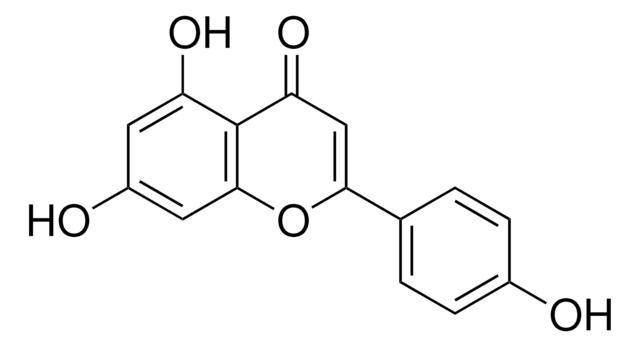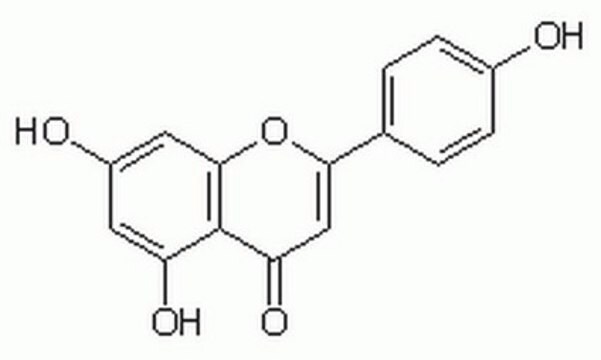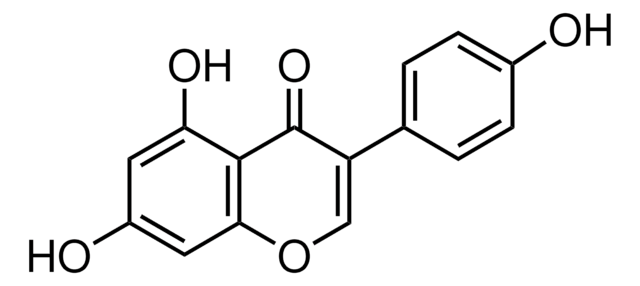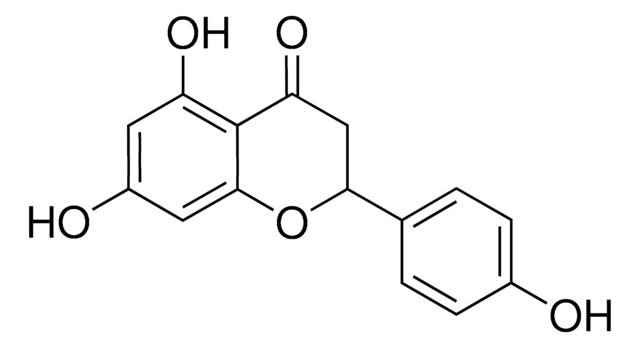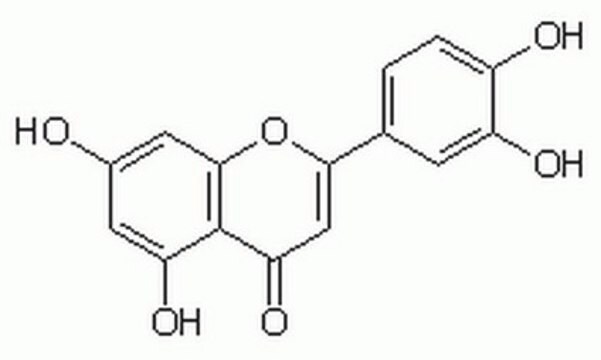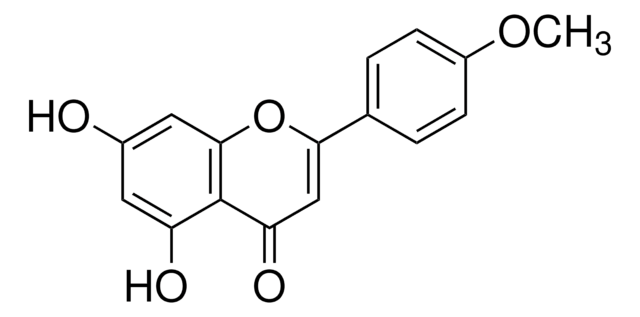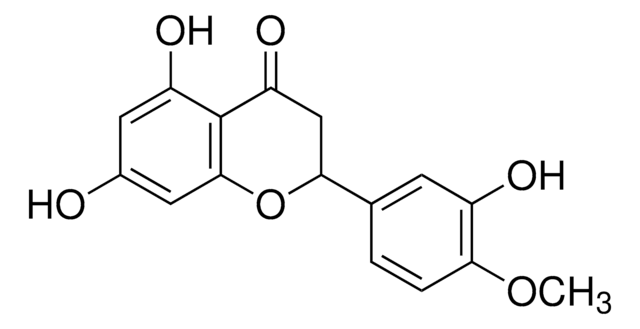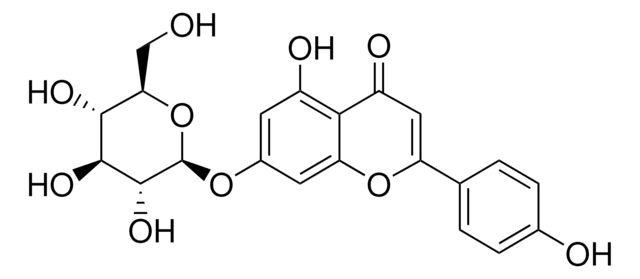Wichtige Dokumente
SMB00702
Apigenin
≥97% (TLC), from citrus
Synonym(e):
4′,5,7-Trihydroxy-flavon, 5,7-Dihydroxy-2-(4-hydroxyphenyl)-4-benzopyron
About This Item
Empfohlene Produkte
Qualitätsniveau
Assay
≥97% (TLC)
Form
powder
mp (Schmelzpunkt)
>300 °C (lit.)
Löslichkeit
DMSO: 27 mg/mL
1 M KOH: 50 mg/mL
Anwendung(en)
metabolomics
vitamins, nutraceuticals, and natural products
Lagertemp.
−20°C
SMILES String
Oc1ccc(cc1)C2=CC(=O)c3c(O)cc(O)cc3O2
InChI
1S/C15H10O5/c16-9-3-1-8(2-4-9)13-7-12(19)15-11(18)5-10(17)6-14(15)20-13/h1-7,16-18H
InChIKey
KZNIFHPLKGYRTM-UHFFFAOYSA-N
Angaben zum Gen
human ... ADORA3(140) , CDC2(983) , CDK5(1020) , CDK6(1021) , CYP1A2(1544) , ESR1(2099) , ESR2(2100) , GSK3A(2931)
mouse ... Hexa(15211)
rat ... Adora1(29290) , Adora2a(25369) , IL4(287287) , Tnf(24835)
Suchen Sie nach ähnlichen Produkten? Aufrufen Leitfaden zum Produktvergleich
Verwandte Kategorien
Allgemeine Beschreibung
Anwendung
- to test its anti-cancer effects as a reference agent to treat various digestive track and liver cancer cells in in vitro studies
- as stimuli and inhibitor to test its anti-inflammatory effects on in vitro inflammatory responses due to dietary and metabolic changes of rural- and urban-living Tanzanians
- as a reference standard to identify the phenolic compounds in olive mill wastewater and pomace
Biochem./physiol. Wirkung
Lagerklassenschlüssel
11 - Combustible Solids
WGK
WGK 3
Hier finden Sie alle aktuellen Versionen:
Analysenzertifikate (COA)
Die passende Version wird nicht angezeigt?
Wenn Sie eine bestimmte Version benötigen, können Sie anhand der Lot- oder Chargennummer nach einem spezifischen Zertifikat suchen.
Besitzen Sie dieses Produkt bereits?
In der Dokumentenbibliothek finden Sie die Dokumentation zu den Produkten, die Sie kürzlich erworben haben.
Kunden haben sich ebenfalls angesehen
Unser Team von Wissenschaftlern verfügt über Erfahrung in allen Forschungsbereichen einschließlich Life Science, Materialwissenschaften, chemischer Synthese, Chromatographie, Analytik und vielen mehr..
Setzen Sie sich mit dem technischen Dienst in Verbindung.